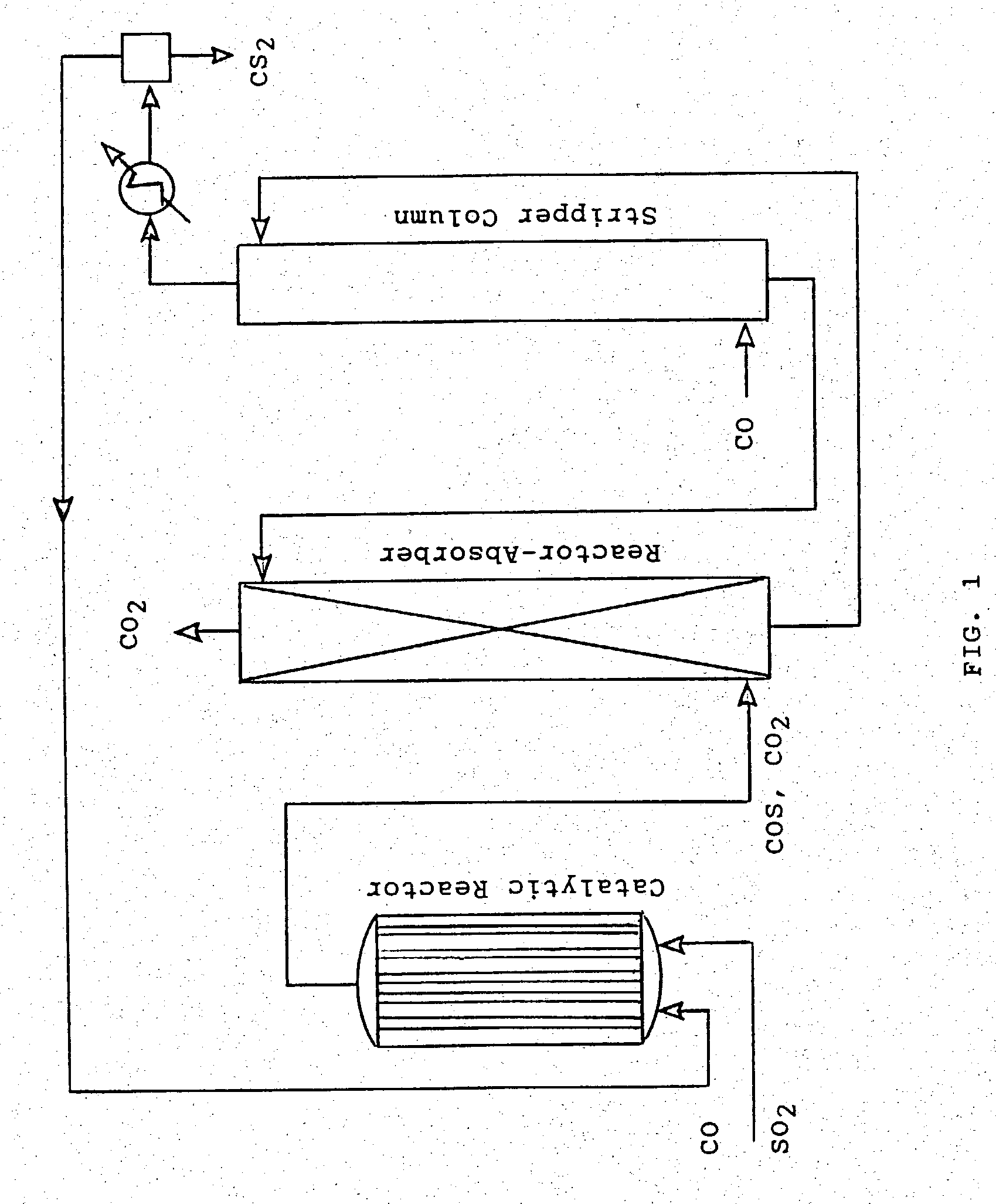Carbon disulfide process
a technology of carbon disulfide and process, applied in the direction of carbon disulfide, carbon-sulfur compounds, etc., can solve the problems of petrochemical process saddled with a major disadvantage, method was both hazardous and environmentally unsound, and no alternative was availabl
- Summary
- Abstract
- Description
- Claims
- Application Information
AI Technical Summary
Benefits of technology
Problems solved by technology
Method used
Image
Examples
Embodiment Construction
[0015] Referring now to FIG. 1, the present invention will be seen to comprise a process for producing carbon disulfide (CS.sub.2) from sulfur dioxide (SO.sub.2) and carbon monoxide (CO). More specifically the process incorporates a first reaction step wherein sulfur dioxide and carbon monoxide are reacted in the presence of a catalyst to form carbonyl sulfide (COS), also known as carbon oxysulfide, and carbon dioxide (CO.sub.2). In a second reaction step, the carbonyl sulfide is converted over a catalyst to carbon disulfide and carbon dioxide in a disproportionation reaction. Normally this second reaction would not go to completion because of thermodynamic limitations.
[0016] The above reactions can be represented by the following equations. 1
[0017] These two equations can be combined to give the following equation which represents the overall process of the invention.
6CO+2SO.sub.2.fwdarw.CS.sub.2.dwnarw.+5CO.sub.2 3.
[0018] As shown, the reaction is driven to completion by removal o...
PUM
 Login to View More
Login to View More Abstract
Description
Claims
Application Information
 Login to View More
Login to View More - R&D
- Intellectual Property
- Life Sciences
- Materials
- Tech Scout
- Unparalleled Data Quality
- Higher Quality Content
- 60% Fewer Hallucinations
Browse by: Latest US Patents, China's latest patents, Technical Efficacy Thesaurus, Application Domain, Technology Topic, Popular Technical Reports.
© 2025 PatSnap. All rights reserved.Legal|Privacy policy|Modern Slavery Act Transparency Statement|Sitemap|About US| Contact US: help@patsnap.com


